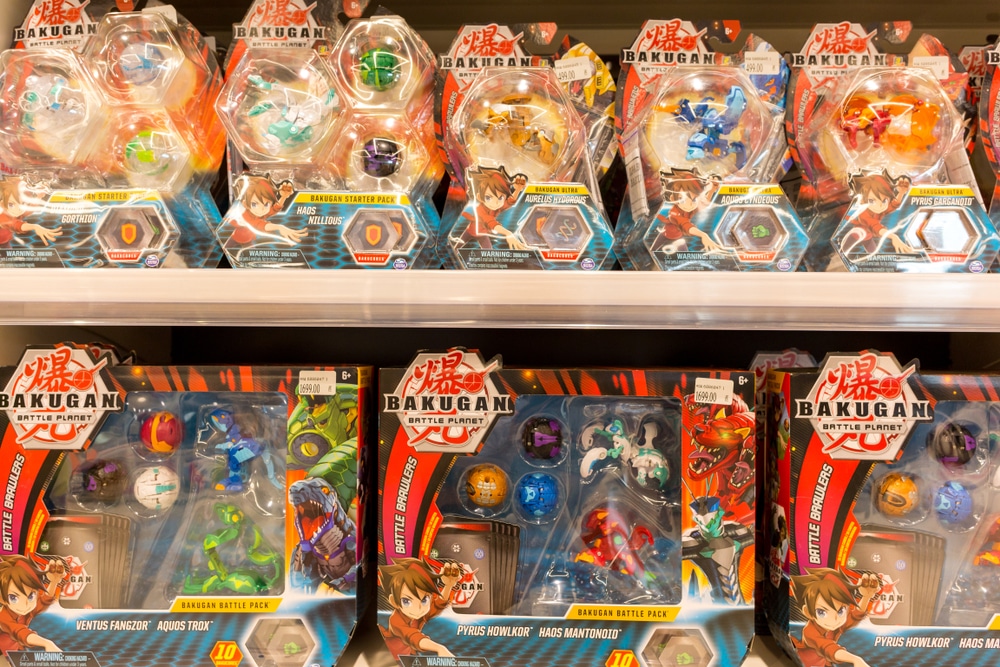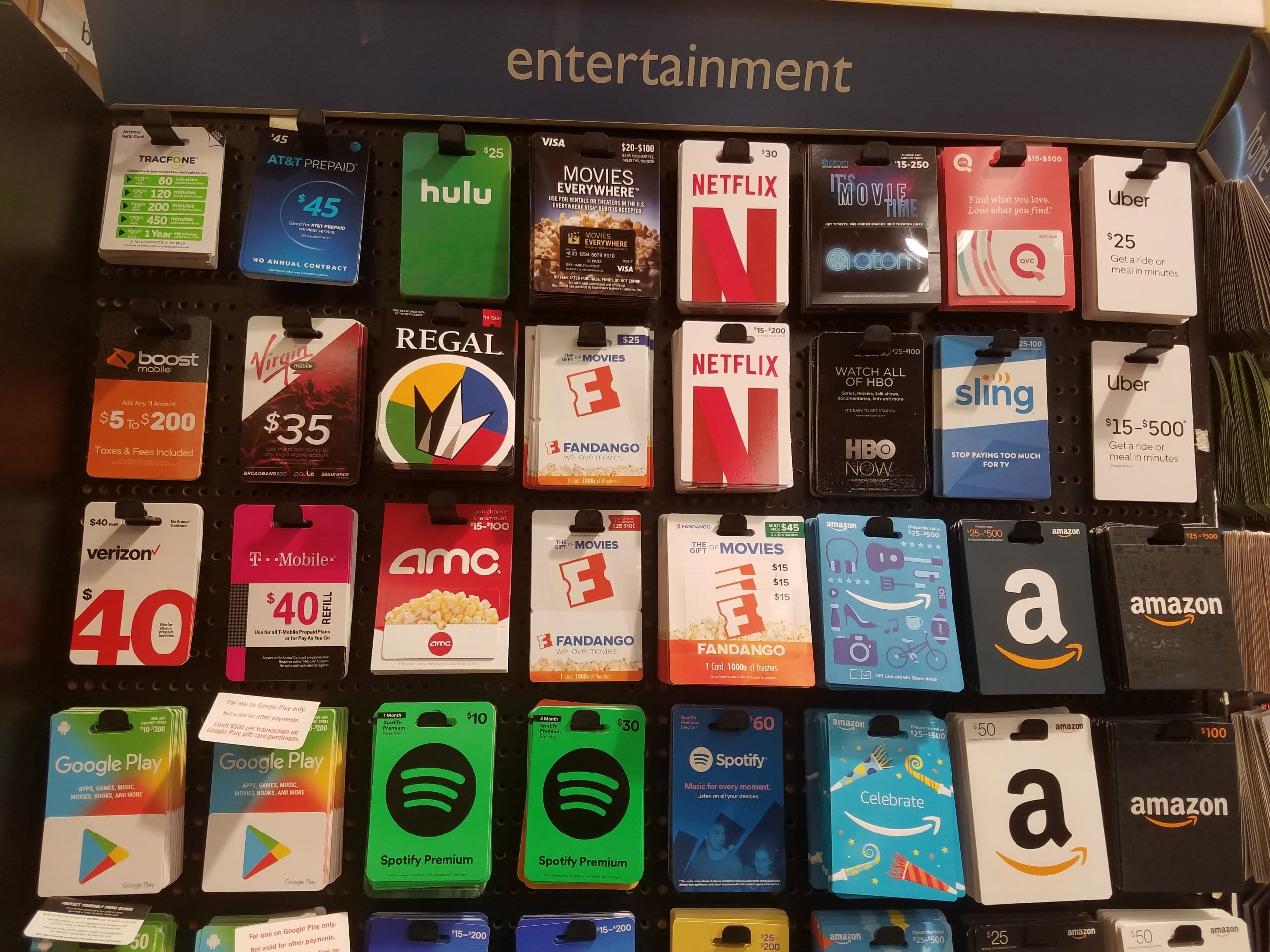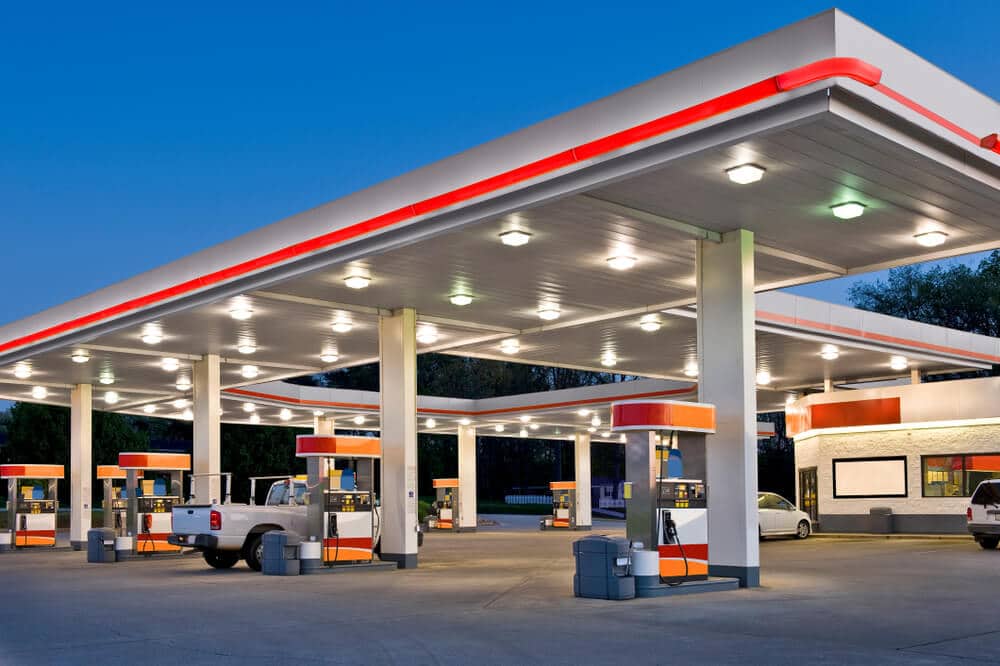If you had a game-loving tween between 2008 and 2012 or if you were one yourself, it’s a great time to declutter your old set of Bakugan toys.
Bakugan was a huge trend, winning the Toy Industry Association’s Toy of the Year award in 2009, and even though the brand has been discontinued, it has still remained popular among collectors.
The market for secondhand Bakugan peaked around 2014, but you can still sell your Bakugan for good prices.
We’ve gathered the details to help you figure out what your Bakugan items are worth and how to sell them for the best price.
What Is Bakugan and Why Is It Valuable?
The word “Bakugan” can refer to a TV show, a video game, a strategy game, or the individual game pieces.
Bakugan started as the Japanese anime TV show Bakugan Battle Brawlers. The show wasn’t a big hit in Japan, but it became very popular in Canada and the United States.
Several spin-off shows, books, and video games were produced, and all of these series created characters that were turned into Bakugan toys.
Bakugan Balls and Game Cards
The Bakugan strategy game uses balls and cards. There are several sizes of balls: the smallest is the size of a large marble, the middle is the size of a ping-pong ball, and the largest is the size of a softball.
The balls were originally sold with sets of game cards. Ability Cards describe the point value and playing options for the ball. Gate Cards have metal strips inside. You could also buy packs of Ability and Gate Cards separately.
Players lay the Gate Cards out to form a playing board and roll the balls at them like marbles. When a Bakugan ball rolls onto a Gate Card, it pops open into a figurine. When two players have figurines on the same card, they “battle” by matching the point value on their Ability Cards. This game was the most sought-after toy for Christmas 2009, and fans still get together to play.
Bakugan Card Decks
Bakugan Attack is a game played with a deck of 56 numbered cards and dice. You can buy and sell the card decks, but they aren’t worth much unless they are new, in the box, and have never been opened.
The original packaging is labeled “Playing Card Game.” If you’ve lost the box, here’s how to tell whether you have Bakugan Attack cards or the strategy game cards: Bakugan Attack playing cards are numbered from one to 11 and have a number in the top-left and bottom-right corner, like ordinary playing cards. In contrast, Gate Cards for the strategy game have a metal strip inside that you can feel, and Ability Cards have a row of numbers up the left side, that can run from zero to several hundred points.
Other Bakugan Gear
As the game evolved, other accessories were added. You could get boards to hold your Gate Cards in place, with a rim to keep the marbles from escaping, cases for your figures or card, or accessories to make the game more exciting, like a launcher to move the balls for you. Some characters had add-on pieces that increased their power in a game.
These accessories have the most resale value if they are new in the box. They aren’t as valuable in used condition, but including them in a set can add a little to the asking price.
What Makes Bakugan Collectible?
The manufacturers Sega Toys and Spin Master sold thousands or perhaps millions of Bakugan items when they were new, so there are a lot of pieces in circulation. They made the pieces more desirable and collectible by combining several different strategies.
- Planned obsolescence: The manufacturers brought out a whole new set of balls with each season of the show and with each spin-off property. That means each particular piece got harder to find as time went on.
- Special editions and limited release: Some figures were only released in Japan. Others were exclusive to certain stores. Some were only given out as promotional gifts when you bought another product. Even the figures in wide release were divided up so that they were more common in some regions and less common in others. Anything that’s scarce or hard to find becomes more valuable to collectors.
- Team building: The whole concept of the game is based on collecting a team of figures you use strategically to beat other players. You can only play each piece once per game. Some pieces can be combined to unlock new abilities and higher point values. This means the more Bakugan items you have, the more you’ll win, and having certain pieces or combinations helps you win.
- Wear and tear: Hitting marbles is hard on the marbles. Bakugan are made of plastic. They have a lot of small joints and a hidden mechanism inside that pops them open when they touch a Gate Card. There are a lot of ways Bakugan can break, and fixing them isn’t easy (when they can be fixed at all). Patched-up Bakugan are fine to play with, but they don’t have any resale value.
How Much Is Bakugan Worth?
What Is the Average Price for Bakugan?
The market for secondhand Bakugan goes up and down constantly. The price for an individual figure depends on many variables, including supply and demand on any given day.
- Unidentified or randomly selected Bakugan figures have sold recently on eBay for $1 to $7.
- Sets of Bakugan without particular characters identified have sold recently for $0.50 to $3 per ball, depending on how many cards and accessories are included.
- Low-priced characters sell for $1.50 to $10.
- Mid-priced characters sell for $20 to $50.
- High-priced characters sell for $100 to $300.
What Makes A Bakugan More Valuable?
Like most types of collectibles, the value of your Bakugan is determined by the condition your piece is in, how rare an individual piece is, and its popularity. If your Bakugan collection shows a lot of wear and tear from rough play or if it was damaged, the value will be much lower. If you have the original packaging, cards, or other accessories that came with your Bakugan, you will get a better price.
Since Bakugan items were mass-produced, there are few truly “rare” pieces. Bakugan merchandise that originally sold only in Japan is highly sought-after and doesn’t come on the US market often, so it can fetch a much higher price. For example, the 2009 Collector’s Edition of the Bakugan Battle Brawlers video game came with limited-edition Bakugan balls inside. There were also some limited-edition Bakugan released individually through McDonald’s, Walmart, Target, and other distributors. Those pieces tend to be more valuable than the mass market items.
Older Bakugan pieces are harder to find in good condition, so a well-kept set of original or “Core” pieces is worth more to collectors than later pieces. Each piece comes with a “G Power” rating that shows its point value in a game; Bakugan with high G Power numbers are more desirable to players.
What Are the Most Valuable Bakugan Items?
The rarest and most sought-after Bakugan is a limited-edition figure called the Gold Fear Ripper, which, released in series one, is only 29 milimeters. A new-in-box Gold Fear Ripper sold recently for $300. The top of the ball opens into two large claws. See a photo of the Gold Fear Ripper on the fan wiki page. Fear Rippers were also released in other colors, including blue, black, red, and translucent; those colors are more common and usually sell in the middle price range.
The Dharak Colossus from the third season of the show is another top-value item. It’s a modular toy that looks like a black dragon and comes with accessories that can transform its appearance and game powers. A new-in-box Dharak Colossus sold recently for $130. See a photo of the Dharak Colossus on the fan wiki page.
The Hydranoid comes in many different styles, colors, and point values. Some have one head, and others have two or three. Most Hydranoids are low or mid-priced items. The most valuable is the limited-edition Darkus Alpha Hydranoid released during the second season. It has a black, red, and purple color scheme and is in the original size of 29 millimeters. It’s marked with a G-Power rating of 500. A used model sold recently without cards or packaging for over $100. See a photo of the Darkus Alpha Hydranoid on eBay.
How to Sell Bakugan for the Best Price
Estimating the value of each Bakugan in your collection may be a long process. The more knowledge you have about the game, the easier it will be for you to pick out the most valuable pieces. If you find the details of identifying so many pieces overwhelming or if you just don’t want to bother with creating multiple eBay listings, you can sell your collection all together.
Sort Your Bakugan Into Groups
Bakugan toys were sold in sets of balls and cards. Each series of the TV show introduced a new set of game pieces, and updated sets often included new versions of older characters.
- Sort your Bakugan by size. Bakugan balls from series one and two are 29 millimeters in diameter, a little over one inch across. The later series are noticeably larger at 32 millimeters, about 1.25 inches. The Deka series are the largest, about 3.25 inches in diameter.
- Separate exclusive models from mass-market models. If you remember getting a certain ball as a promotional gift or that was exclusive to a certain store, set it aside for extra attention.
- Match your cards and accessories to the balls as best you can.
- Sort your Bakugan by condition:
- Items that are new in the box, unopened.
- Items in mint condition with the original packaging, cards and accessories.
- Items in good condition with cards and accessories but no packaging.
- Items in used condition that still work.
- Very worn or damaged items are worthless unless they are very rare. You may be able to include worn items that still work in sets to increase their appeal.
Identify Your Bakugan
The manufacturer has published poster guides to help you identify each Bakugan in your collection. The original website by Sega Toys is glitchy, but you may be able to find images on third-party sites like individual blogs and websites.
- Keep a list of each piece with its full name, series, color, and point value. Remember that some pieces were issued in multiple versions and the same characters were updated in later seasons. Look closely to make sure you have the right one.
- Start with the exclusive models. These are your best chance of finding a hidden gem.
- Identify the smallest pieces. Those were issued in the first and second series and are most likely to retain value.
- Work your way down the value tree. Spend more time identifying items in the best condition.
- Double-check your card groupings. When you know the name of your piece, you can look up which cards might have been included with it or create sets of cards to sell together. Each card has a set number, which is usually a hyphenated number in the lower right corner.
If you need help identifying your Bakugan, you can try posting questions and photos at the Reddit site for Bakugan fans. You might even get an offer! Naturally, you should double-check what you’re told and use the same care you’d use whenever you buy or sell anything online.
Decide Where to Sell Your Bakugan
Once you’ve identified your Bakugan, you can do a Google search for the name to get an idea of its value. If you already have an Amazon seller account, the price listings there may be helpful to you. You’ll also find Bakugan listings on the Walmart Marketplace and other types of resale sites. It’s usually quicker and easier for individuals to sell items on eBay. eBay also has a big market of collectors searching for your items.
When you find listings for the model you’re researching, go to the list of filters and scroll down to the section labeled “Show Only.” Check the box for “Sold Listings.” Now you’ll see real prices that a buyer paid in the last few days or weeks. This way, you can be sure your price estimate is current and realistic.
Sell Bakugan
Selling Special Bakugan Individually
If you find a middle to high-value item in your collection, congratulations! It’s probably worth creating an individual eBay listing for it. You can open an eBay account or, if you already have an account, see instructions for creating a listing.
Be as specific as you can with identifying information and use the brand’s own jargon as much as possible. This will help serious collectors find your listing. For example, don’t say your Bakugan is blue — fans call it “Aquos.”
Selling Low-Value Bakugan in Sets
For your low-value items (or if you just can’t face dealing with the identification process), the most efficient way to sell your collection is as a set. To attract the most bidders and get the highest price at auction, follow these tips:
- Take clear photographs of the set in good light on a neutral background. Close-ups of more desirable pieces or special accessories are helpful.
- Give accurate numbers of each category included. For example, if you have 10 small “Core” balls, 20 medium-sized “B-2” balls, and 8 Dekas, specify that in the description. If you are including loose cards, say how many Gate Cards, how many Ability Cards, and so forth.
- List card sets and extra gear. If you’re including a game board or a complete set of cards like an Expansion Pack, mention that in the description.
- Be up-front about condition. Be clear about which pieces have wear and tear. Buyers will have confidence that they know exactly what they’re getting.
 William Lipovsky
William Lipovsky






